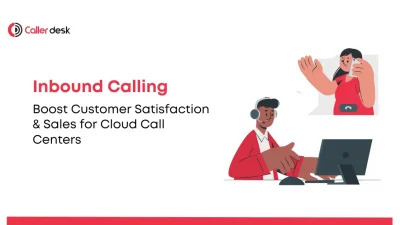These days, just working hard in sales is not enough.
Your team might be calling leads, sending emails, and joining meetings all day—but still not getting results.
Why? Because they don’t always have what they need to succeed.
Many salespeople:
- Don’t know which leads are worth their time
- Struggle to find the right words to say
- Waste time looking for files or pitch decks
- Feel unsure about what to do next
That’s where sales enablement can help.
Sales enablement means giving your sales team the tools, learning, and support they need to do their work more easily and sell more successfully.
It helps them spend less time preparing and more time actually selling.
With the right help, your team can reach the right customers, say the right words, and make more sales.
What Is Sales Enablement?
Sales enablement means giving your sales team the help they need-like tools, training, and content-so they can talk to customers with confidence and close more deals easily.
This support includes:
- Tools – like CRM software, calling platforms, or mobile apps that help them manage leads and talk to customers easily.
- Content – such as product brochures, email templates, presentations, or videos that help explain what the company offers.
- Training – regular learning sessions that teach salespeople how to improve their communication, answer questions, and handle objections.
- Marketing Support – the marketing team helps by generating leads, sharing customer insights, and giving the sales team the right content at the right time.
Think of it like preparing a student for an exam. You give them good books, notes, practice tests, and guidance from teachers.
That way, they feel ready and confident.
Sales enablement helps salespeople do their job better, stay confident, and bring in more customers for the business.
Why Is Sales Enablement Important?
Let’s say a salesperson wants to sell something. But no one tells them what to say, who to talk to, or gives them anything to help.
They waste a lot of time doing everything on their own like:
- Searching for the right files or documents
- Writing emails from the beginning every time
- Guessing what the customer really wants
Now imagine if they got help.
With sales enablement, they:
- Get a list of people who are already interested in buying
- Get ready-made emails, presentations, and messages
- Know the right things to say at the right time
- Close more deals quickly and easily
Businesses that use sales enablement close about 49 out of 100 expected deals, which is much better than those who don’t use it.
What Does Sales Enablement Include?
Sales enablement gives your sales team everything they need to do their job better and faster. Here’s what it usually includes:
1. Helpful Content to Win Customers
This means ready-made things like:
- Case studies (stories of happy customers)
- Email templates (messages salespeople can use)
- Price lists and brochures
Instead of creating everything from scratch, salespeople can use these materials to explain the product and convince people to buy.
2. Training for New Team Members
When someone new joins the team, they need to learn quickly.
Sales enablement provides:
- Training videos
- Step-by-step guides
- Practice calls or sessions
It helps new members become confident and start selling faster.
3. Smart Tools Like CRM
CRM stands for Customer Relationship Management.
It’s like a smart notebook that helps salespeople:
- Save customer details
- Track follow-ups
- Remember past conversations
Sales enablement connects these tools so everything works smoothly
4. Understanding What Customers Want
Sales enablement helps teams use data to figure out what customers are thinking.
For example:
- What products they looked at
- What emails they opened
- What problems they want to solve
This way, salespeople can say the right thing at the right time and make customers feel understood.
How to Make a Sales Enablement Plan
If you want your sales team to close more deals and work smarter, you need a clear plan.
Here’s how to build a sales enablement strategy step-by-step:
Step 1: Connect Sales and Marketing Teams
Your marketing team creates content like product brochures, emails, and videos.
Your sales team uses this content to talk to customers.
When both teams share ideas and work together, it becomes easier to reach the right people and close more sales. Think of it like a cricket team where everyone plays their part to win.
Step 2: Use Smart Tools
Give your team the tools they need to work better.
Start with a CRM (Customer Relationship Management tool) like Zoho or HubSpot—this helps store and track all customer details in one place.
Also use platforms like CallerDesk to:
- Make and receive business calls
- Track call status and follow-ups
- Send reminders to customers automatically
These tools save time and help your team stay organized
Step 3: Keep Sales Materials in One Place
Salespeople need easy access to:
- Price lists
- Email templates
- Customer success stories
- Product information
Put everything in one folder or system so they don’t waste time looking for the right files.
This helps them respond to customers quickly and confidently.
Step 4: Train and Support Your Sales Team
Just like students need classes to learn, sales teams need regular training to improve.
You can:
- Show recordings of great sales calls
- Give feedback on what they can do better
- Share tips from your top-performing salespeople
The more they learn, the better they will sell.
Step 5: Track and Improve Performance
To know what’s working, check key numbers like:
- How many leads are turning into paying customers?
- How long does it take to close a deal?
- Which content is being used the most?
- Is your revenue growing?
Use this information to make smart changes.
This way, your sales strategy keeps getting better over time.
Sales Enablement vs Sales Operations: What’s the Difference?
Both Sales Enablement and Sales Operations help a business sell more. But they do it in different ways.
Let’s break it down:
What is Sales Enablement?
Sales enablement helps your salespeople do their job better by giving them:
- Helpful content like brochures, emails, and pitch decks
- Tools to talk to customers more easily
- Training to improve their skills and confidence
It’s like a coach giving players tips, strategies, and gear before the matc
What is Sales Operations?
Sales operations takes care of the background work like:
- Deciding which salesperson works in which area (territory)
- Setting targets (quotas) for the team
- Making sure tools like the CRM system work properly
- Creating reports to track progress
It’s like the team manager making sure the match is organized, the players are in the right position, and the scoreboard is working.
Best Practices for Sales Enablement
Want your sales team to perform like champions? Here are some smart tips that successful companies follow:
1. Keep content fresh and easy to find
Salespeople should always have access to the latest documents, videos, or presentations. If they spend time searching, they lose time selling.
2. Make sure all teams work together
Sales, marketing, and support teams should share ideas and updates. When everyone works like one team, things run smoothly.
3. Use the right tools to save time
Good tools help track leads, calls, and customer info. This way, your team knows who to call, when to follow up, and what to say.
4. Use data to learn and grow
Check what’s working and what’s not. Look at reports and numbers to see which strategies help close more deals—and improve from there.
5. Keep training your team regularly
Even the best players need practice. Give your team small lessons, tips, or coaching sessions to help them stay sharp and confident.
Conclusion
Selling doesn’t have to be stressful or confusing.
When your sales team has the right tools, training, and support, they can focus on what matters most—helping customers and closing deals.
That’s exactly what sales enablement does.
It saves time, removes guesswork, and gives your team everything they need to succeed—just like how students need good books, teachers, and practice to score well in exams.
If your sales team often feels stuck, slow, or unsure—sales enablement is the missing piece.
Start small, keep learning, and make sure your sales and marketing teams work together.
With the right plan in place, your team will sell more confidently, connect better with customers, and grow your business faster.



